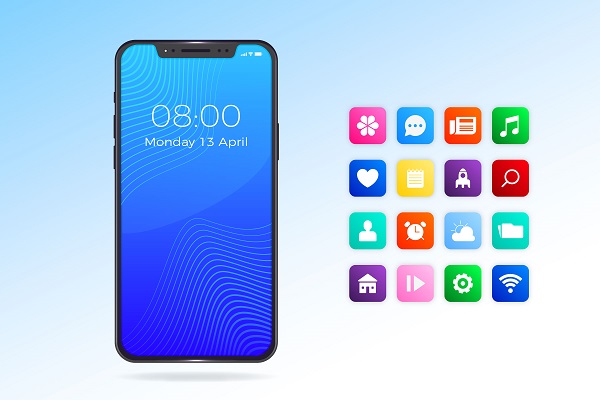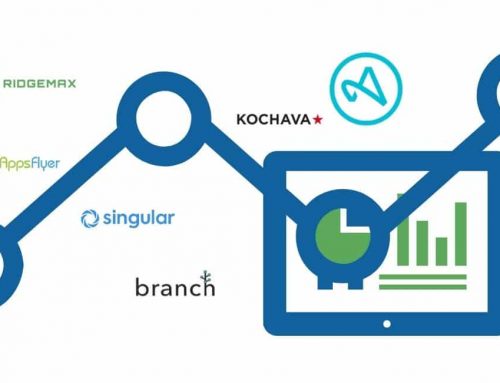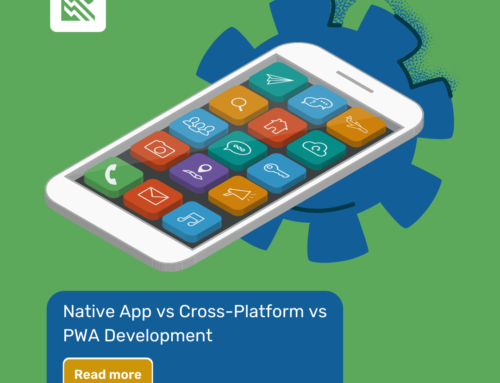This article will help you discover some of the key metrics you should track for your mobile app
Connecting with your customers or clients is the most important, and now companies are able to do this more effectively with apps. Apps are trending and, if applied correctly can solve communication, data and organizational management issues.
The success of an app is largely determined by the users of it. Only 25% of apps worldwide are accessed only once during the first 6 months of download, according to Statista. How can this number increase, and what actionable measures can ensure the growth of your app? Whether you hired someone or a company to create an app, progress requires involvement from you, the owner throughout the building process, branding and marketing the app.
Key Elements All Apps Must Assume
Communicating with the app development team, programmers and designers clearly will help create an app that meets both your expectations and the realistic final product. By familiarizing yourself with the proper terms and the relation it has on you as the future owner of the app, you can effectively communicate your vision, address necessary changes and strategize for its launch.
User Acquisition
As with all business, acquiring customers or users is most important especially when introducing new technology or app. Whether you intend for your app to facilitate existing clients or it is for the general public, both require new user buy-in. Before the app is created, you must strategize how you will promote the mobile app and by which channels you plan to do so (social media, incentives, etc.).
User Interaction
This refers to how motions, actions and animations interact with the users of the app. The development team aims to design an app that engages and naturally moves for each individual who will use it. As the one who saw the need for this app for your company, you know the expectation of the users, and therefore some specific features of the design may need your test and direction to most effectively visually customize the app. When you first test the app, what should you focus on for the best user interaction?
Make sure you focus on the words, the 2D images and icons, sound and animation, and fulfilment of the app’s purpose, The words should be simple to read and fully understand for the users. The 2D objects and animations should be used to visually express the information and purpose of each app feature. As you review the app, consider how users may interact with it on different sized devices, and their physical location while using it (loudness of space, what they may physically be doing while looking at the app, and their movement between places). The user’s experience while on the app will determine the future for the app.
User Retention and Churn Rate
The benefit of using mobile apps within your business is the opportunity to maintain frequent, returning customers. At the same time, applications have exploded the business world in such a way that has greatly competition. Retention rate is the number of customers who repeatedly return to your app over a certain period of time. Churn rate measures the number of lost customers. Existing customers are 55% more likely to purchase again than a new customer committing to buy. For example, if an app has a 65% retention rate, then the churn rate is 35%. For this reason, these terms are especially significant for apps that use a subscription pricing model. If you find your churn rate has increased and the retention rate has lowered, you must reevaluate your effectiveness in customer service and relevancy.
Calculating the right retention rate and churn rate provides key growth indicators. There are a few formulas to use: retention by day, return retention and range retention. Retention by Day provides data to help track the number of users who continued to come from one day to the next. It is best to use this formula to measure the increase of users from a one-day campaign to the next day. Return Retention calculates the measurement of the number of users returning on a specific day after downloading. This may be different users, but on a specific day, a higher number returned. For example, User A came back on day 3,6, and 9 after download, User B came back on days 2, 4, and 6, and user C came back only on day 6. If you check day 6, it will show that all three users returned to the app on that day. This could be used to track measurements to indicate holidays or special days people tend to use the app. And, Range Retention Rate is the most highly recommended because it tracks patterns and trends over a long period of time per user. This calculates the number of users continuing to use the app for a specified range of time: 7-day range (for weekly behaviour patterns such as eating or exercising), 30-day range (for monthly behaviours such as bill pay or financial reports). Each retention rate formula can effectively direct your marketing efforts towards the market’s intended use of the app.
App Stability
Have you ever experienced a site or app that loads slow, has an error, and difficult to use? An app that technically functions well as opposed to the list above is considered stable. To ensure a fast, responsive app, the developer will need to create a solid infrastructure. This depends on the programming platform each of which uphold either Apple iOS users (such as Swift) or Android users (such as Java). Creating an app requires detailed planning from the initial vision including: is it for online use only or offline and online use, the key features and the amount of visuals and videos to be included.
App Performance
All well functioning apps on the mobile phone have high device, server and network performance. Testing your app with a small group of 100 users before launching it is the best way to check your app’s performance. This will reveal any necessary changes the developer should adjust to accommodate its intended use. Key elements to test the device performance include the start-up of the app and battery usage as well how the app functions with various devices, running in the background and alongside other applications.
If the app responds slowly, it may indicate a problem with the server or network performances. Using a checklist may help focus your app testing, and communicate the problems with your developers.
Ratings and Reviews
After your app is launched, the best and easiest form of customer feedback usually are given through ratings and reviews. These are evaluations and judgments given to a product or service. For those launching an app on an app store, reviews affect the app’s downloads and visibility on search results. By carefully attending to user reviews and engagements, you can increase the number of app downloads. How can you take action to provide seamless user experience through these engagements? One way is by adding a review feature within the app that will notify you of user evaluations, and you can quickly respond.
By remaining involved through the app development process, strategizing how the app can appeal and satisfy users, you increase the probability of your app’s success. Afterall, it is all about the customer.






